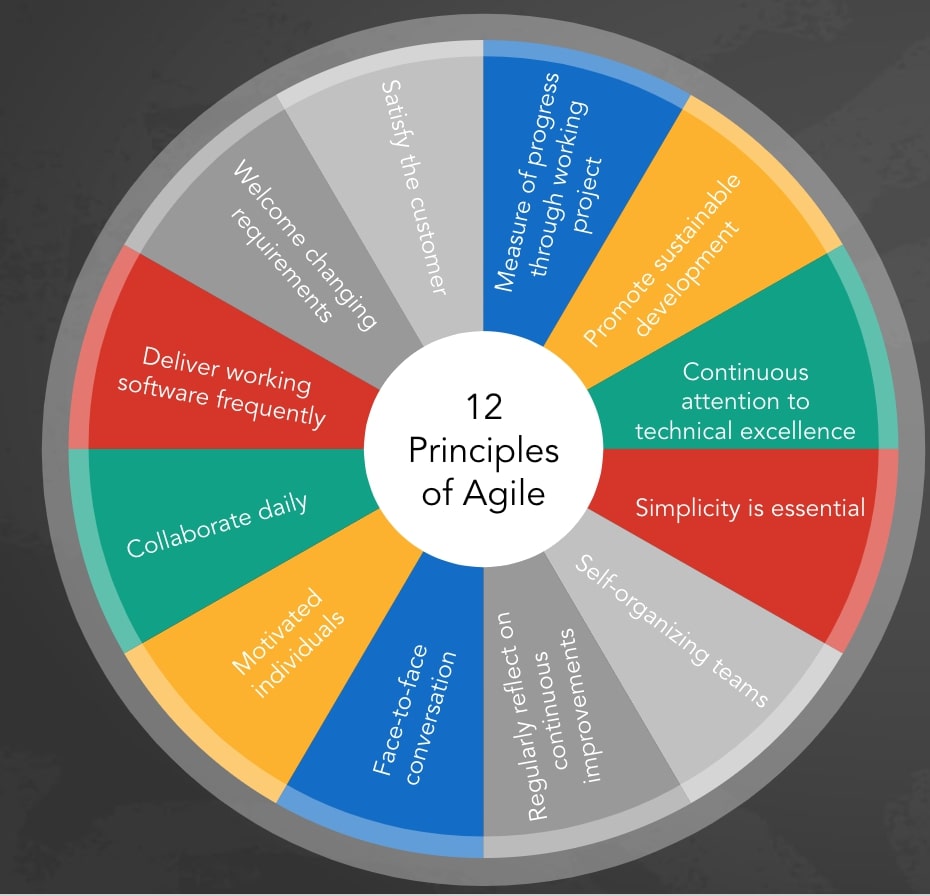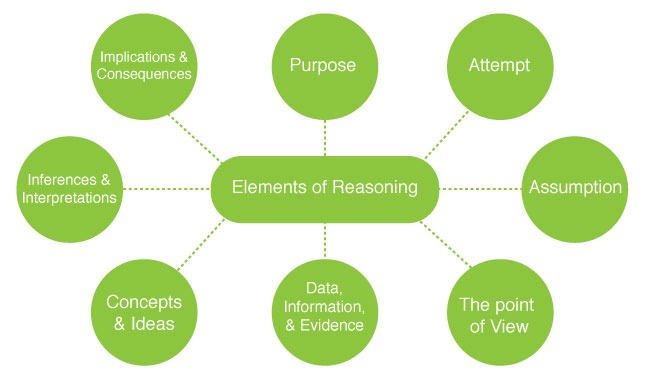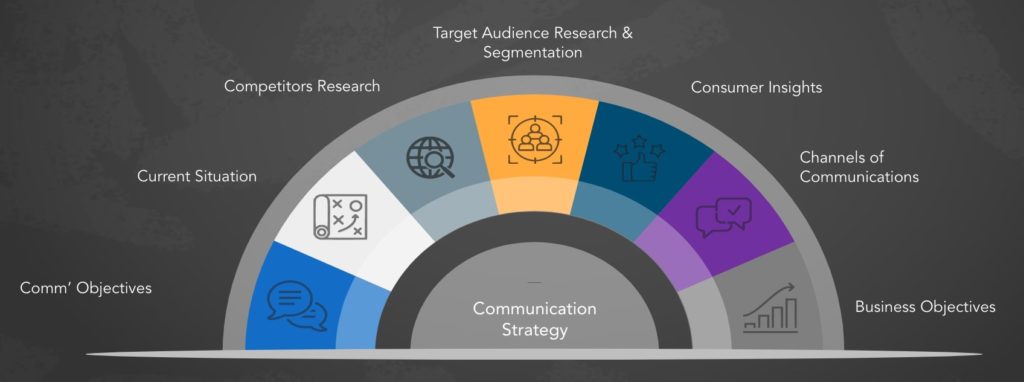According to statistics, 60-80% of project failures happen due to poor analysis, requirements gathering, and change management. As difficult as adapting to change is, it’s crucial to complete complex projects.
That’s why the agile methodology emerged to improve software development businesses worldwide. The agile mindset helps companies tackle these challenging environments by embracing the change.
Agile practices empower employees to produce their best work and offer team members a sense of creativity, freedom, and innovation. In the end, you see happy and healthy teams, allowing for an improved and efficient work system.
Businesses in almost every field use this growth mindset to evolve and prosper.
Read on to discover how to develop an agile mindset in seven easy steps and what there is to gain from this practice.
7 Steps to Achieve the Agile Mindset
The agile mindset combines different principles, core values, and practices. And like all routines, an agile mindset takes time to attain, and psychologists say learning a new habit takes around 30-60 days.
Adopting these practices requires patience; however, the results are more than rewarding. Here are seven core practices to follow during the agile adoption process.
1. Study Agile Manifesto’s 12 Principles
Agile Manifesto developed 12 core principles that help employees and employers become more open-minded to the agile mindset approach.

These principles are as follows:
- Place customer satisfaction above all priorities.
- Self-organizing teams are the ideal team.
- Working products are the best success.
- Embrace logical change at every step of a project.
- Face-to-face communication over other forms of communication.
- Never underestimate the power of simplicity.
- Work towards a sustainable pace of development.
- It’s essential for business and tech people to work together.
- Put a sufficient amount of time into producing quality products.
- Aim to improve your working deliverables at a continuous rate.
- Learn valuable lessons from your failures and successes.
- Produce quality results by building projects around motivated teams.
2. Create and Organize Clear Goals
Defining a clear goal is an excellent step toward developing an agile mindset. When you plan and implement tasks to work towards, it creates a clear vision of the project. It also allows the team to visualize the tasks they need to carry out and how to achieve the end product.
In addition, it helps you determine which tools you need and brainstorm the methods that help you achieve your goal. This practice is also suitable for personal development. For example, teams produce flowcharts, visual diagrams, and schedules. These all allow them to brainstorm ideas that all members agree on.
3. Practice and Promote Critical Thinking
The point of the agile mindset is to create a workforce that adapts well to changes. Thus, critical thinking techniques are a massive advantage in problem-solving.

Credits: Designorate
When unforeseen issues come around, it’s essential to act and not react. Critical thinking entails solving problems by doing certain things to find the solution. Here are a few things critical thinking involves:
- Identifying the problem and evaluating how it relates to the situation or people involved.
- Thinking objectively is key to developing an agile mindset.
- Creating structured reasoning and a systematic approach to solving the issue.
- Evaluating different points of view to determine the validity.
Overreacting or letting the problem simmer won’t solve your problems. An agile mindset that embraces critical thinking explores all the factors and analyzes the entire situation, which helps save time and reduce the waste of resources.
When agile teams use critical thinking and a growth mindset, it helps them share different perspectives and angles without fear of judgment. Such a mindset allows the members to acknowledge, and take into consideration, all the essential points. An agile mindset engages the whole team and increases their chances of beating deadlines, delivering high-quality work, and satisfying customers and workers.
4. Be Transparent
Building an agile mindset’s means accepting responsibility for one’s shortcomings and sharing key information with other team members. It is a team effort, after all. Withholding necessary information or data only harms the project. Transparency involves tracking growth and development and giving performance feedback for the continuous improvement of the agile working environment.
When you provide a clear outline of the team members’ roles and responsibilities, you create the kind of agile mindset that leads to less confusion and setbacks for the team. For example, patterns in the data analysis and budget figures are available to all. This allows all members to recognize errors, thus creating a faster resolution. If it starts from upper management, it benefits the company.
Transparency across all departments makes for smooth operations concerning discussions and collaborations. When there is an establishment of trust, it becomes easier for employees to believe and have faith in their superiors, creating harmony between the management team and team members.
5. Center Your Focus on the Customer
A company’s main priority is its customers, and people create companies to provide the products and services customers desire. That’s why a customer’s ideas, feedback, and demands are essential to producing quality end products.
It’s important to acknowledge that customer purchases bring you profits. Gathering and using customer feedback and demands enables you to create products or services.
In addition, use client recommendations and input to create valuable solutions. Having an agile mindset means learning how to collect data, carry out surveys, and gain insight from customer trends. The team then uses these to improve customer relations and products.
6. Practice Communication and Collaboration
Embrace every opportunity to foster teamwork. Communication and collaboration are vital to developing high-performing teams with an agile mindset. Group training is a great way to enforce Agile-based games, and these exercises in the work environment are enjoyable.
While not everyone likes being a team player, teamwork makes you feel more confident about your area of expertise. Likewise, you realize what your colleagues are best at and how they best contribute to the project.

Acknowledging and appreciating your team members and their many skills and contributions creates harmony within the workplace. You improve your team’s overall productivity by developing a great working relationship with your coworkers.
Consider getting working software or programs that allow teams to share work, conference, chat, and track schedules and task completion. This is a great way to bring groups together, even when not in the workplace.
Participating in team activities, having fun at work, and getting accustomed to working with others all contribute to your mental health. It makes the workplace less stressful and allows your team to deliver high-quality work.
The agile mindset aims to bring unity to the work environment. Creating a team effort by co-operating and working together benefits the entire team and improves the company’s quality and customer satisfaction.
7. Stay Humble and Reflect on Your Past Actions
It’s important to understand that to err is human.
Nevertheless, the important thing is to learn from these experiences. An agile team aims to learn from those failures and utilize them for continuous improvement. This helps the team understand what works and what doesn’t and the best ways to carry out a specific task.
When you reflect, you learn how to be open-minded and think of new solutions to problems. This, in turn, builds expertise and wisdom, characteristic of an agile mindset.
Practicing the Four Pillars of the Agile Mindset
The core value of an agile mindset is to adapt to change with flexibility and agility. It takes time to implement these core values, and that’s why four key pillars make agile practices easier to adopt.
Respect for All People and Cultures
This is an essential pillar of developing an agile mindset. You must remember that everyone on your team has a common goal, purpose, and vision. All team members are necessary for the project’s success and your organization.
Team members treat with respect and gravitate toward delivering valuable, sustainable, and continuous results. Team members need to feel psychological safety and care to bring up ideas, concerns, and questions that might aid in a successful project.
With the constant change in customers’ needs, it’s critical for all team members to feel safe being vulnerable and taking risks with each other. This mindset creates a positive agile work environment that empowers everyone to evolve in their agile practices.
Keep a Sustainable and Optimized Flow
Optimized workflow influences reduced batch sizes, incremental delivery, and continuous improvement. The agile mindset prioritizes quality by maximizing value and minimizing waste, and it’s easier to fix the issue when it occurs rather than when the workflow ends.
The agile mindset allows teams to catch defects in the early stages before they deploy the product, which helps them avoid redoing large batches of work when problems with the project arise.
A sustainable and optimized workflow encourages developing a collaborative, thriving, and agile team instead of an exhausted and overworked group.
Encourage Innovation
Allow your team to provide collaborative and constructive feedback, different approaches, and new ideas. This opens the door to experimentation that transforms your culture altogether. Nurture your team’s creativity because innovation is the driving force of an agile mindset.
A significant benefit of the agile approach is the autonomy the team has access to during projects. People thrive in creating new, improved, and efficient solutions to problems when people aren’t telling them what to do.
Work Towards Relentless Improvement
It is impossible to achieve an agile mindset if you are unwilling to work at it. Be consistent and keep working towards improvement. Encourage your team to continue optimizing, problem-solving, and reflecting.
Agile practitioners who focus on relentless improvement determine the causes of problems and work on solutions immediately. Use agile tools like Jira and Confluence to organize your workspace and techniques to solve problems fast.
Agile Mindset: Key Takeaways
Some key takeaways are that agile processes take time to adapt, require individual effort, and call for presence and participation. This mindset also creates a high degree of trained and competent workers, and the agile mindset encourages structure, quick thinking, organization, and workforce efficiency.
Much like the growth mindset, an agile mindset proves to be an asset to many businesses. Many businesses are opting for the agile approach and becoming more solution- and customer-service-driven rather than profit-driven. A functional agile team is sure to improve the reputation of the organization and the success rates of projects.